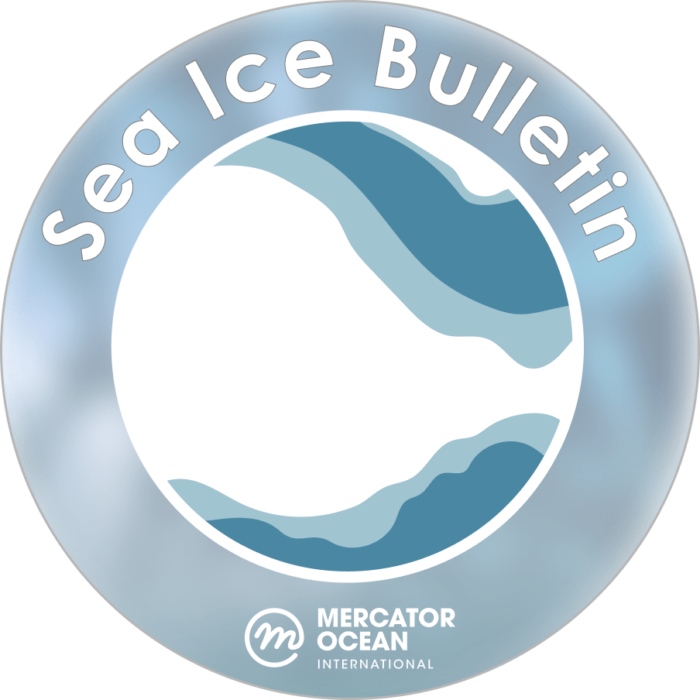
Key take-aways
- This first half of 2024 saw a continuation of the drastic loss of sea ice at global scale caused by a combination of the now usual major melting during the northern hemisphere spring in the Arctic, and now the significant lack of sea ice growth during the southern hemisphere autumn in the Antarctic.
- On the 25th of June 2024, the global (northern and southern hemisphere) sea ice extent is close to the 2023 historical record (figure 11) and the global sea ice volume reached a new record, lower than those of 2022 and 2023 (figure 12).
- Arctic Sea ice extent reached 9.43 million km2 (figures 1,3) and sea ice volume has reached 10,670 km³ (figures 7) on the 25th of June 2024.That represents respectively a loss of 0.7 million km2 (7%) (figure 4) and 12,020 km³ (52%) (figure 6) compared to the long-term average (1993-2010). For the month of June, more than half of the Arctic Sea ice volume has disappeared in the last thirty years.
- Antarctic sea ice extent has reached 12.3 million km2 (figures 2,5) and sea ice volume has reached 6,300 km³ (figures 9) on the 25th of June 2024. That represents respectively a loss of 2.7 million km2 (18%) (figure 6) and 6,400 km³ (50%) (figure 8) compared to the long-term average (1993-2010). For the month of June, half of the Antarctic Sea ice volume has disappeared in the last thirty years..
- At global scale, the cumulative loss of 3.40 million km2 of sea ice extent (figure 11) in the last thirty years corresponds to 3 times the size of France (all regions).
- The sea ice volume in 2024 at global scales is following the footsteps of the historically low years of 2022 and 2023 (figure 12). Compared to 1993, the global sea ice volume loss of 18,000 km³ corresponds nearly half year of the world river discharge.
Sea Ice Extent
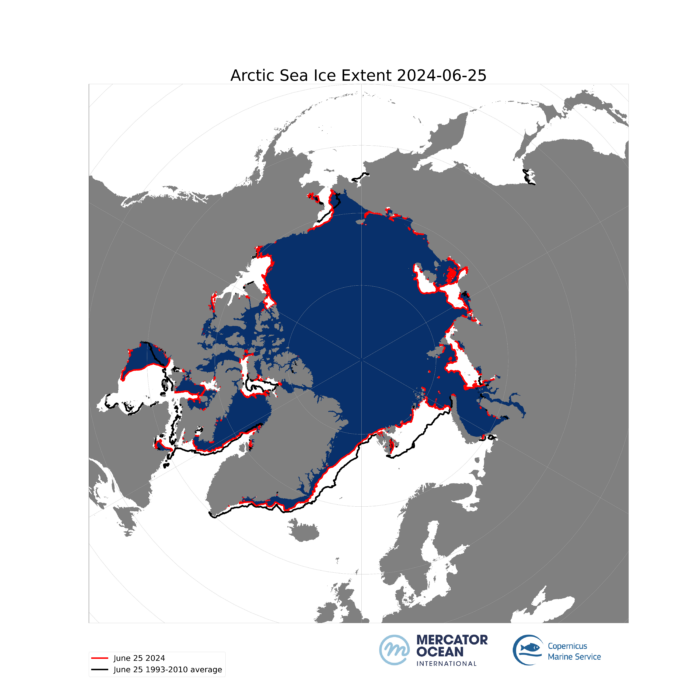
Figure 1: Arctic Sea ice extent (red) for 25 June 2024. The black line represents the 1993-2010 average (climatology) for the same day of the year. Data from the Global 1/12° forecasting (Lellouche, 2018) and reanalysis (Lellouche, 2022) systems. *
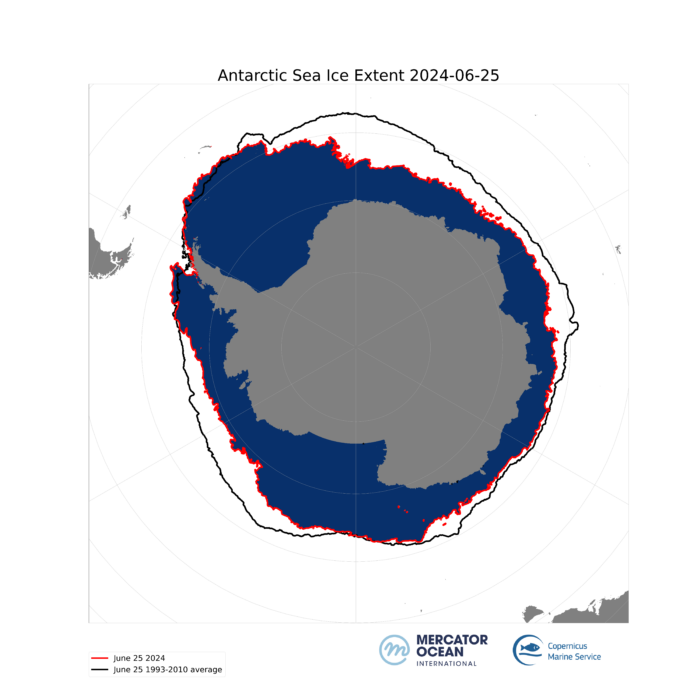
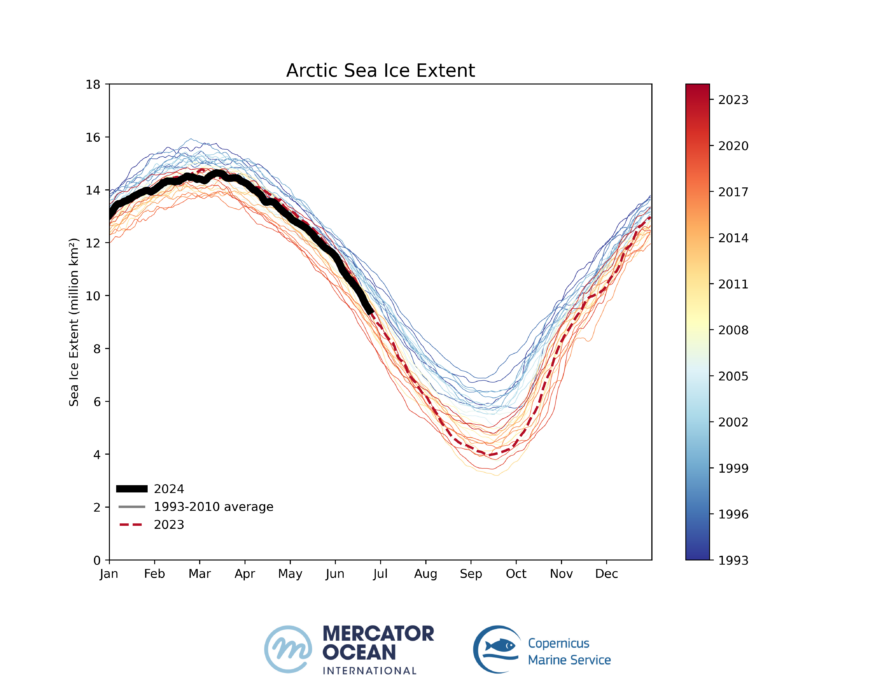
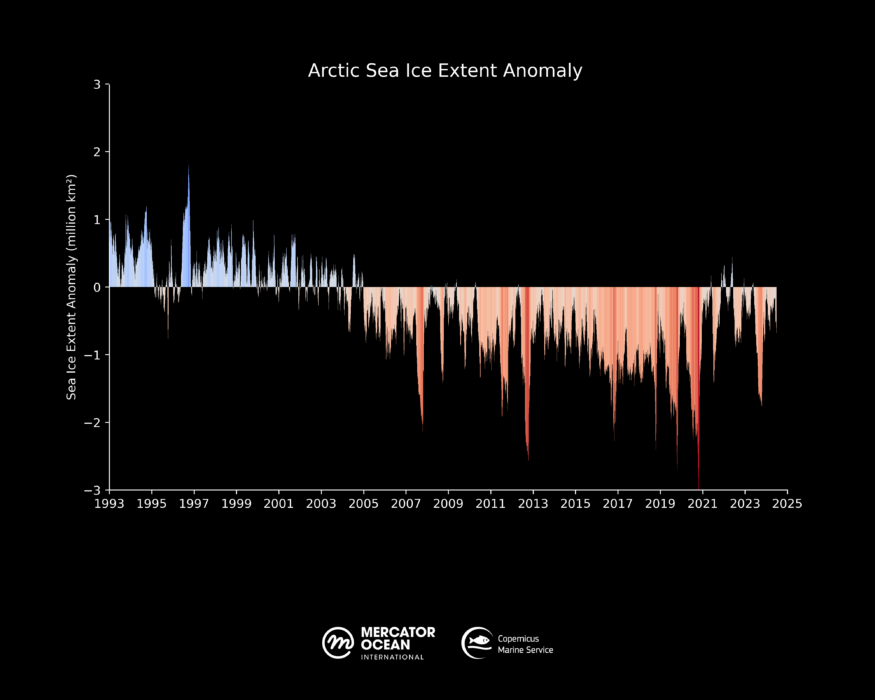
Antarctic Sea Ice Extent
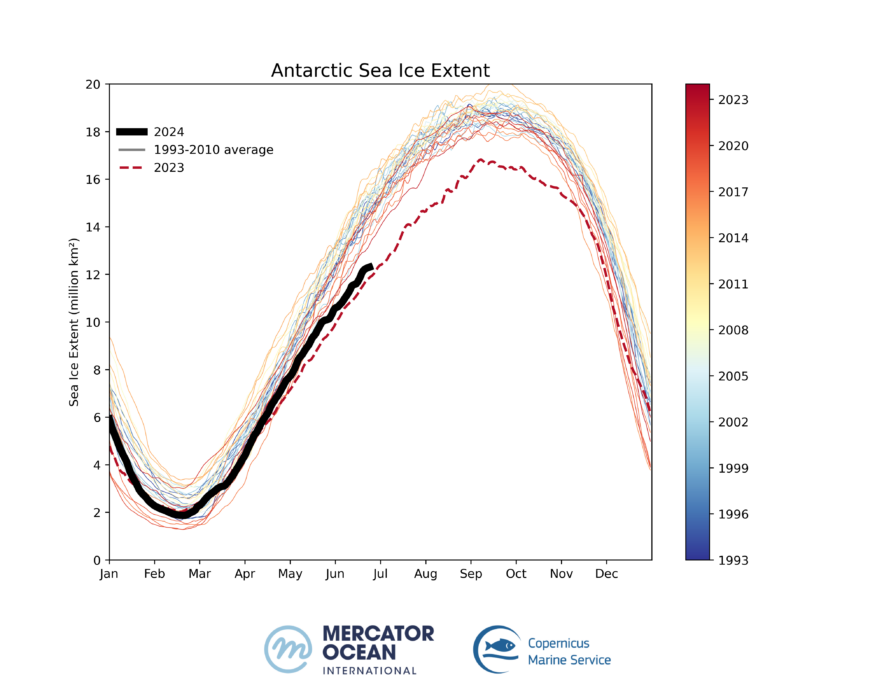
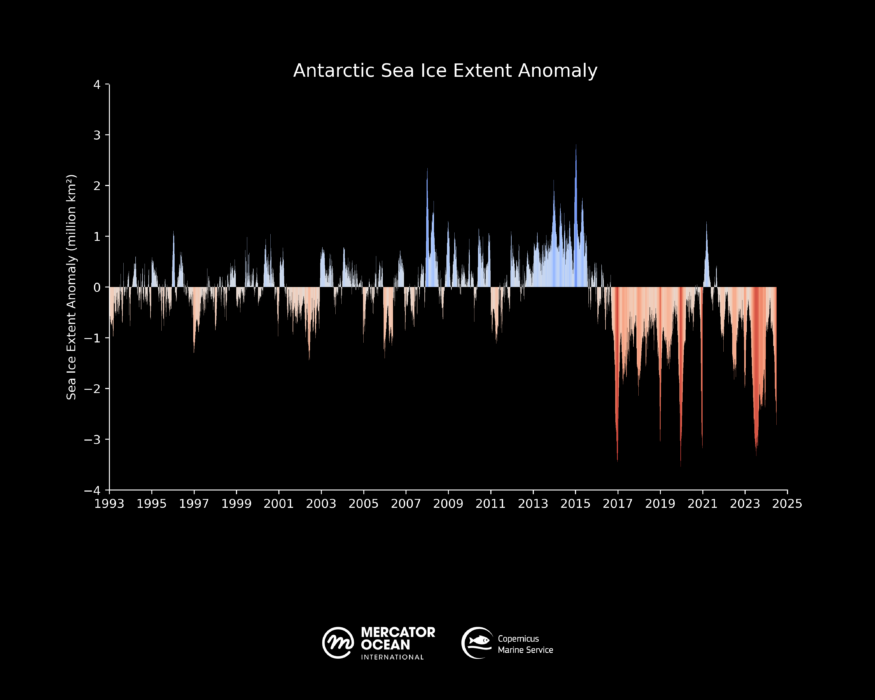
Arctic Sea ice Volume

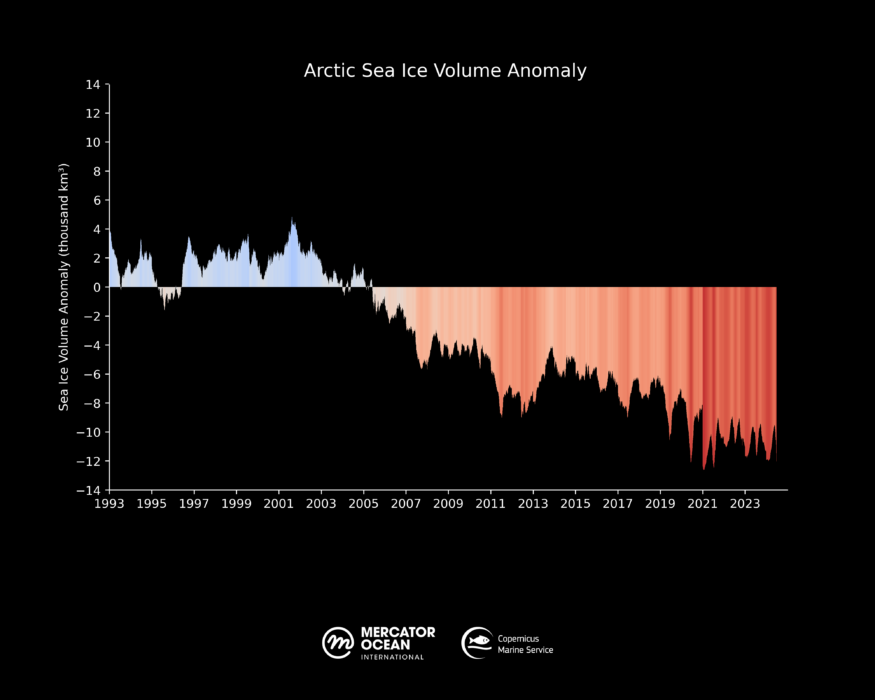
Antarctic Sea ice Volume
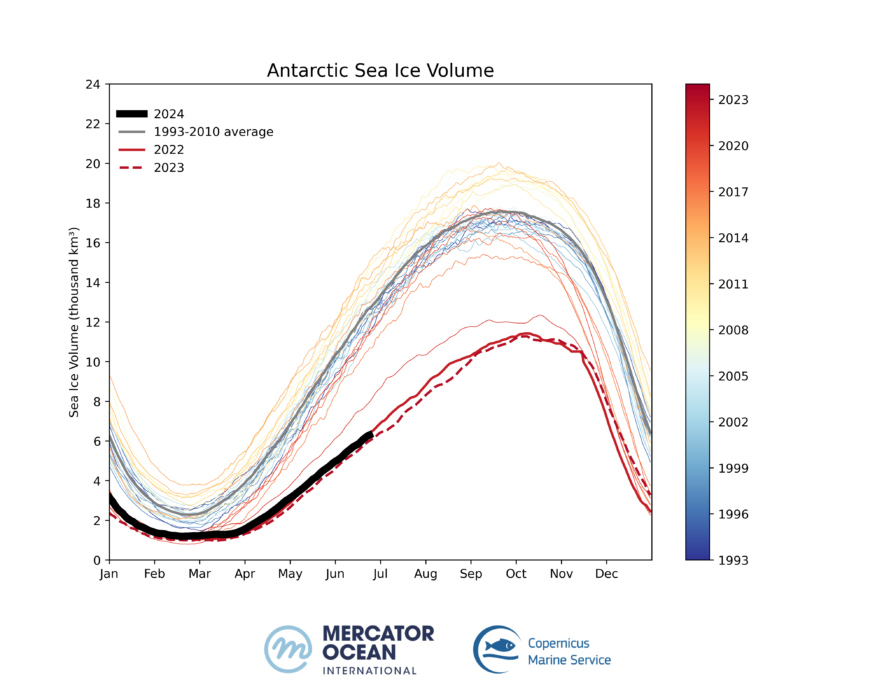
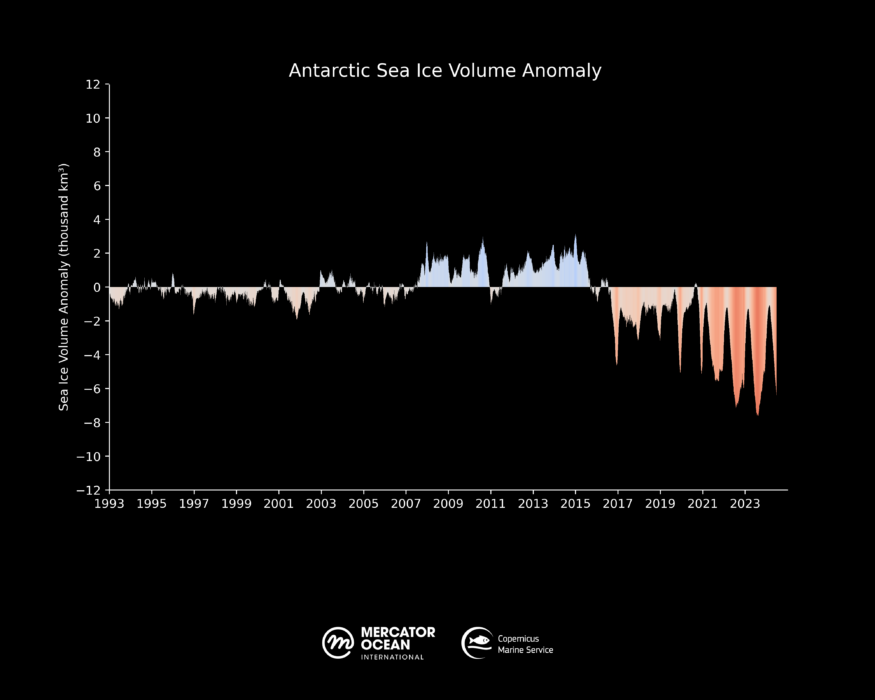
Global Sea ice Extent and Volume
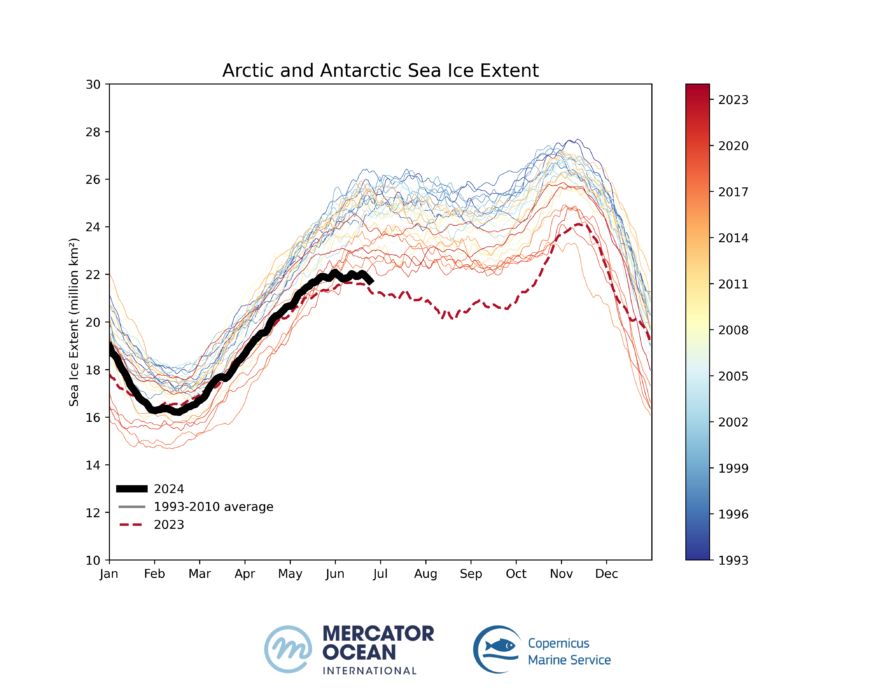
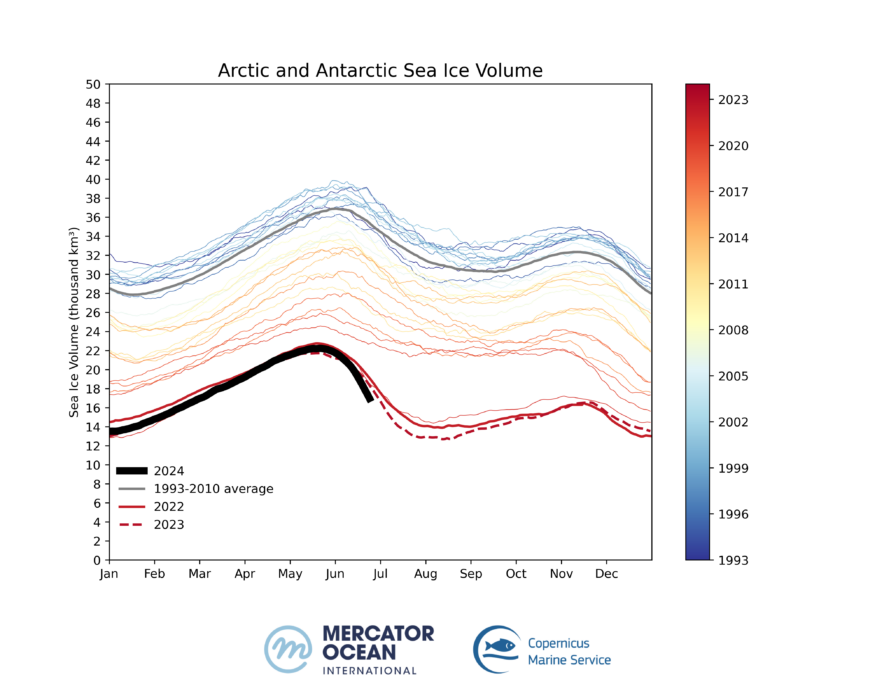
Definitions:
- Sea ice extent – area covered by a significant amount of sea ice, at least 15% sea ice concentration (km²).
- Sea ice concentration – percentage of sea ice cover within the data grid cell.
Notes:
This Mercator Ocean bulletin was developed by Clement Bricaud, Gilles Garric, and Gratianne Quade.
Products and data used: GLORYS12V1 global ocean eddy-resolving (1/12° horizontal resolution, 50 vertical levels) reanalysis covering the altimetry (1993 onward). https://doi.org/10.48670/moi-00021
The Operational Mercator global ocean analysis and forecast system at 1/12 degree. https://doi.org/10.48670/moi-00016
References:
*Image citation: European Union, Copernicus Marine Service Data 2024 I © Mercator Ocean
All images in this article can be used freely and should be cited with the information above.
More on the topic:
Antarctic Sea Ice Reaches Lows Never Before Observed – Mercator Ocean (mercator-ocean.eu)
Arctic Sea Ice Bulletin March 2024
